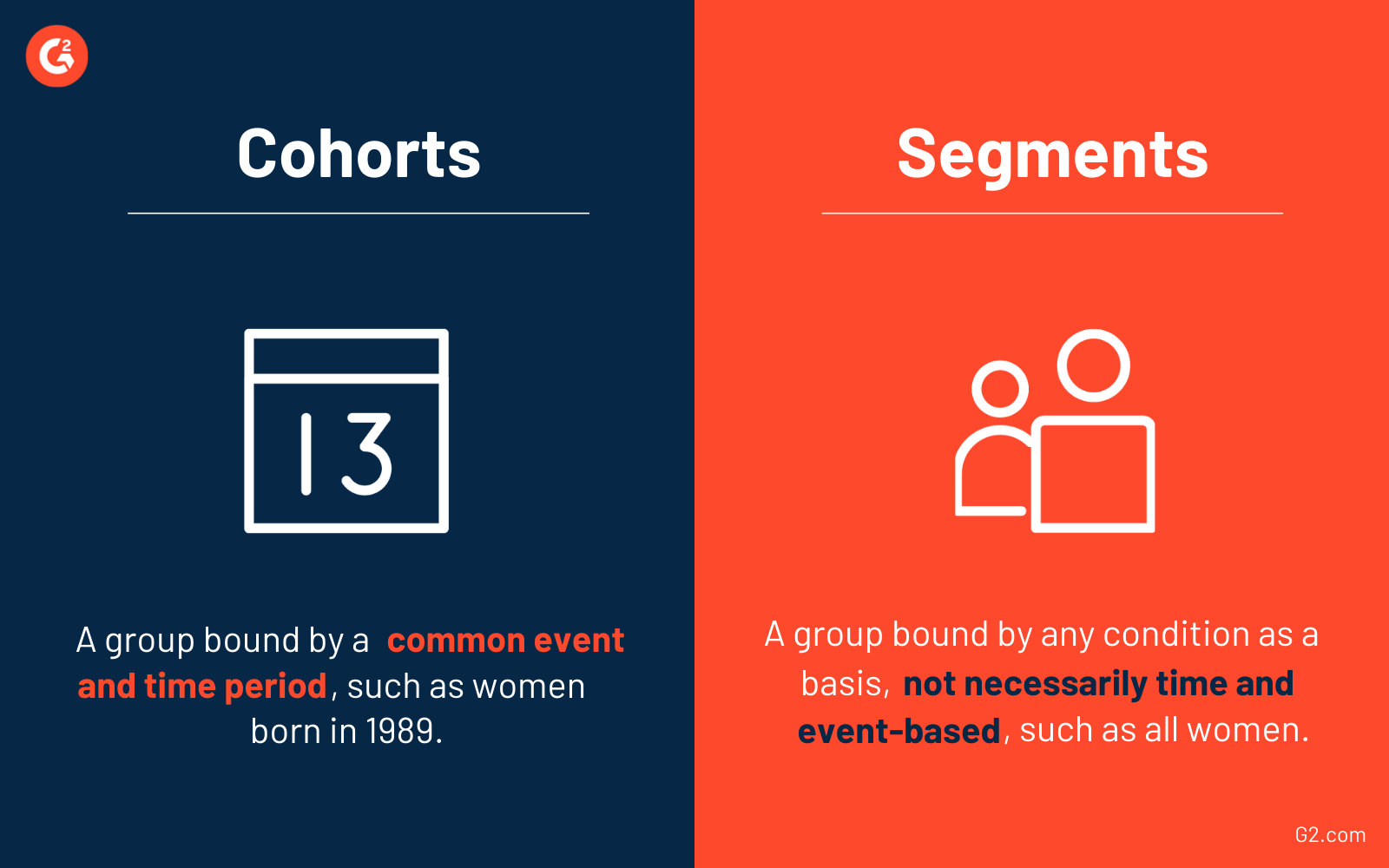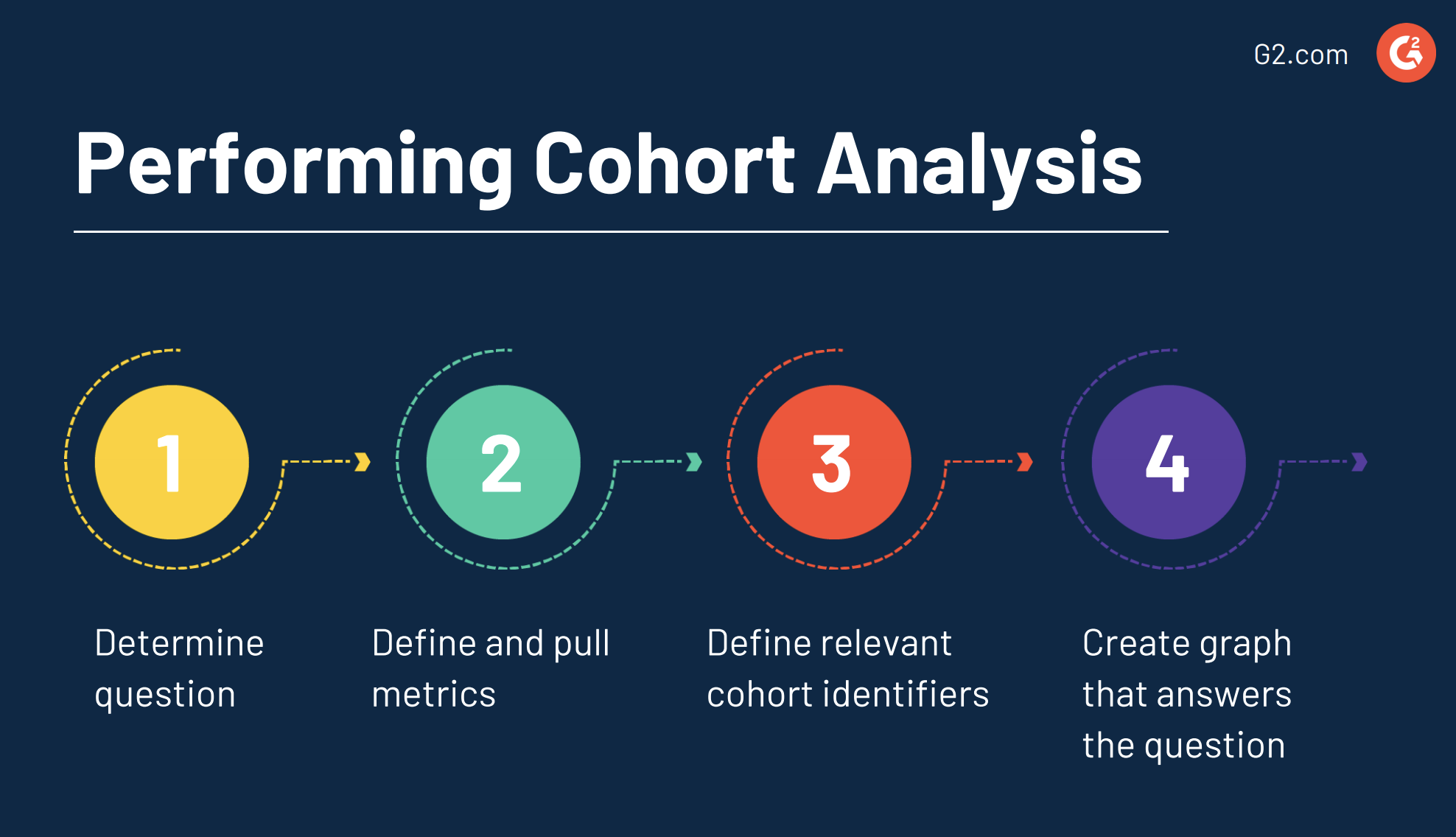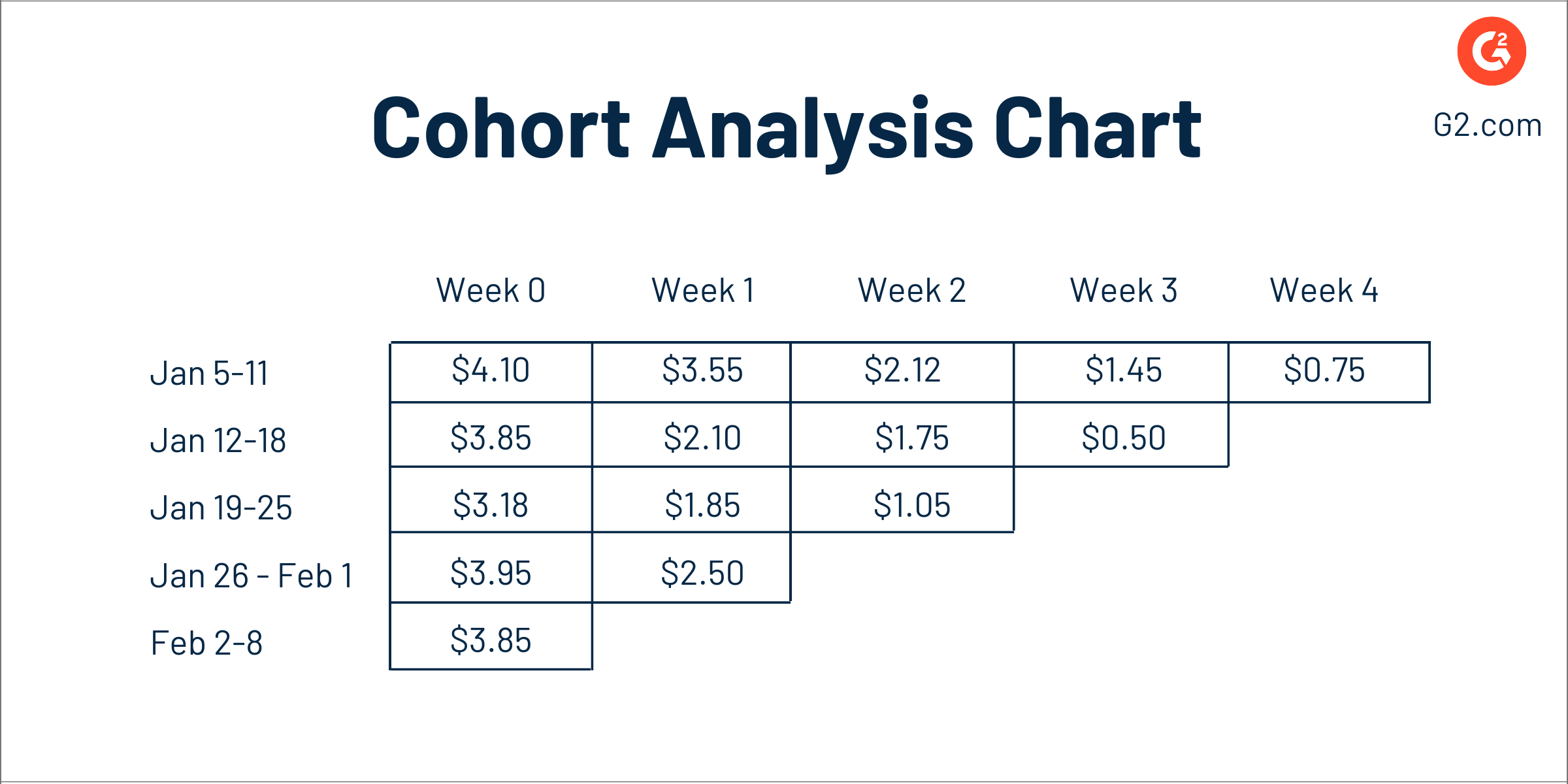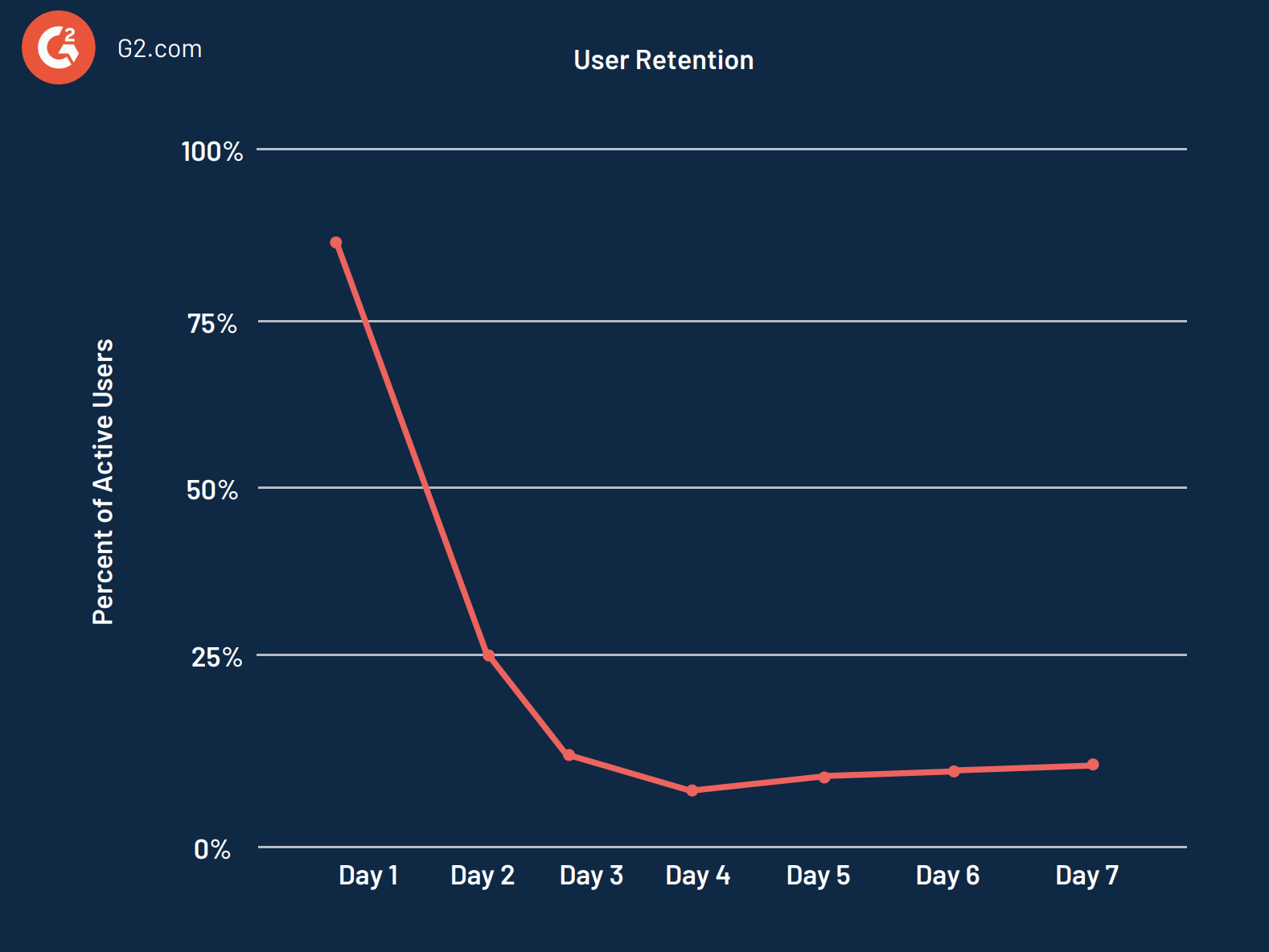Whether you do it subconsciously or on purpose, it’s human nature to put things into groups.
Maybe you organize your closet based on color or your glassware according to size. You may even group your friends based on who you can call in the event of an emergency.
Whatever the case may be, you’re doing your very own cohort analysis without even realizing it by organizing your personal items into groups, also referred to as cohorts.
What is cohort analysis?
Cohort analysis is the process of using behavioral analytics and data from various platforms or web applications, and breaks down the data into groups for additional examination. These groups, or cohorts, typically share specific characteristics over a period of time.
In the business world, cohort analysis could be one of the most effective ways to gather information regarding customer behavior and how they interact with your product or service, no matter your industry. It’s easier said than done, and a lot goes into making sure you’re doing a cohort analysis the right way.
Cohorts vs. segments
It’s common to see the terms cohorts and segments used interchangeably when taking a deep dive into behavioral analysis. This isn’t correct, as the two terms aren’t the same.
For a group of users to be considered a cohort, they must be bound by a common event and time period. This would be women who were born in 1989 or college graduates in 2011 with a business major.
However, a segment of users can be created with almost any condition as a foundation. It doesn’t have to be time and event-based, such as women or all graduates.

Quer aprender mais sobre Plataformas de Análise? Explore os produtos de Plataformas de Análise.
What does cohort analysis do?
When it comes to business analytics, it’s common to compare cohorts and analyze the behavior of a single cohort as a way to identify patterns.
Performing a cohort analysis can answer questions like:
- When do users begin to churn?
- How valuable are your cohorts?
- Are new cohorts more or less valuable than previous ones?
- What is the retention rate of your users?
- What is the long-term value of your users?
When you check the performance of a certain cohort, there’s a wide range of metrics that can help you. For instance, they can help you identify problems sooner, like customer churn rate. Checking each cohort can also develop more accurate business forecasts, which allow for more information regarding seasonal behaviors, better strategic planning, and a fully developed marketing plan.
How to perform a cohort analysis
There are four main steps to performing a cohort analysis.

First things first, you need to determine the question you want answered. The point of performing a cohort analysis is to have some sort of actionable information at the end. This information would then lead your business to either improve their product or service, or improve the user experience and turnover rate.
Next, narrow down the metrics that will help you answer this question. Whether that’s knowing when a user stops engaging with your app or what their average total transaction is, it’s vital to have these metrics before you move on.
After that, define your cohorts. Either you’re going to analyze all of your cohorts and target them the same, or you’re going to put them into groups based on the differences and similarities between each of them. Regardless of the route you pick, the goal is to discover and explain the behavior as an individual cohort.
Finally, you’ll perform the analysis using data visualization, which will allow you to see the results in an organized graph that will help you answer your original question.
Cohort analysis chart
At first glance, cohort charts are intimidating and not the easiest to read. This type of data visualization packs a lot of information in one place.
Below is an example of a cohort analysis chart that plots weekly revenue per group. In this chart, the cohorts are defined as customers acquired in a specific week, starting in the second week of January.

Cohorts run on a vertical axis, with the oldest cohorts at the top and the newest ones at the bottom. This example shows weekly cohorts with the oldest week starting on January 5th. Along the horizontal axis, you will see the time periods since the start of the cohort. This data begins at week 0 and goes through week 4.
The data in the middle is where you’re able to see the revenue spent per group. The oldest cohorts, or customers, have the most time with your company, and thus have more data.
To better visualize the trends in data, most cohort charts utilize color shading. When we take a look at the data again, but with color-coordinating cells, you will see that the darker the color, the higher the revenue per user is.

The color difference between cells also makes it easy to see when value decays over time, so in this case, we can see that users spend more money in their first week than any other week. You can also see anomalies within the data, like the low start during the week of January 19th.
RELATED: To be able to read a cohort analysis graph, you first need the right data visualization software that can create it for you. If you aren’t sure which option is right for your business, read the unbiased reviews on G2.
Types of cohort data
To break users into groups to perform a cohort analysis, two types of cohort data need to be collected: acquisition cohorts and behavioral cohorts.
Acquisition cohorts
The first type of cohort data is acquisition cohorts. This data consists of groups divided based on when they signed up for or purchased a product. If your product is an app, you could separate users by the day, week, or month that they first launched your app.
This would mean you have cohorts broken down in daily, weekly, or monthly groups. This allows businesses to determine metrics such as how long people continue to use their app from the starting point.
In the example below, we can see a trend in the number of active users within a mobile app. This chart allows the easy visualization of the retention curve, showing when cohorts stop using the app, as well as indicating that users are not finding the app enjoyable or useful after the first day of use.

Acquisition cohorts are also ideal for when a trend needs to be identified and when customers begin to churn, but it can be hard to make actionable insights from this data.
For instance, you can see that customers are leaving, but you can’t see why customers are leaving. Which is where behavioral cohorts come into play.
Behavioral cohorts
The second type of cohort data is behavioral cohorts. This data consists of groups divided based on their behaviors and actions with your product.
To use the app example again, there are a variety of actions a user could perform, like when they first installed the app, when the app was then launched, and if any transactions took place.
Doing this allows businesses to monitor how long different cohorts stay active within the app after they perform specific actions. This is done with the standard cohort analysis graph, which includes cells with various shading, so you’re able to see users' specific actions, like if a transaction occurred or if a user abandoned their cart.
Benefits of cohort analysis
Now that we’ve broken down how to perform an analysis and how to read a cohort graph, let’s explore all of the benefits that a cohort analysis will bring to your business.
Improve customer retention
Since the process of cohort analysis involves taking a deep-dive into groups of people and observing their behavior, it’s an ideal way to improve your customer retention.
This is done by utilizing both acquisition and behavioral cohorts. This allows for measuring engagement over time, so it’s easy to see where customers are dropping off. For instance, a decrease in the activity of the old users could be masked by an impressive growth of new users, which results in concealing the lack of engagement from a small number of people.
Not only can you see a better picture of the product life cycle with cohort analysis, but also the user life cycle. Thanks to acquisition and behavioral cohorts, you’ll see specific actions over a specified timeframe.
Understand the effects of unique behaviors
Sometimes the action of segmenting your customers by the date in which they made a purchase isn’t useful, because it’s not specific enough to get a clear picture of how each of your customers is different. When you group your cohorts by their behavior with your website or app, it allows your business to see a clearer picture of how customers interact with your product through its lifecycle.
With cohort analysis, you can define these groups of users based on the actions they take, or the ones they don’t. This could be anything from how they navigate through your website, when their usage with your app begins to drop off, or when and why a user would abandon their cart before making a purchase.
Test a hypothesis
Cohort analysis also makes it simple to quickly and effectively test a hypothesis, in addition to receiving relevant and timely feedback.
Let’s say a hypothesis is that a particular action taken on your business website, like receiving a discount, will increase the chances of a customer signing up for a free trial. If that’s the case, you can define specific cohorts and compare results to see how each cohort responded to that action.
A/B testing
It’s common for businesses to use A/B testing software to track their user base, and when combined with cohort analysis, even more insights await.
Cohort analysis allows for A/B testing as you also control variables that will, at some point, affect various outcomes, like time and place. This means your business can create better tests, learn even more from your customers, and see them from a different angle as you segment them in new ways.
When your business uses both, it’ll open the door for more accurate and detailed information. If you aren’t sure which A/B testing tool is right for your business, take a look at the unbiased reviews that await on G2 in the link above.
Challenges of cohort analysis
While it’s clear that there are many benefits of cohort analysis, as well as many reasons why your business should be using it, there are some challenges that you may experience.
- To perform an effective cohort analysis, you may find that your business needs to follow a large number of cohorts for a long period of time.
- The process of cohort analysis can be expensive and time-consuming.
- You may have participants that leave the cohort, which could skew the results and make them biased.
- Your business should have a data analyst on staff who can assist in reading the results of the analysis.
Cohort analysis examples
The result of a cohort analysis is incredibly useful, no matter the industry your business falls in. For some industry-specific examples, just keep reading.
E-Commerce
If your business is in the e-commerce sector, you may use cohort analysis to analyze the behavior of your customers. Maybe you’re interested in seeing which of your customers have made a purchase within the last 90 days and are looking to analyze the patterns during a specific sale or promotion that you ran during that time.
With cohort analysis, you’ll see that the customer experience with your website, product, or service, isn’t the same for everyone.
SaaS
Those in the SaaS sector may find that cohort analysis is the perfect way to analyze the data of their customers who have signed up for their new product launch or platform upgrade. It can also be used to see which of their customers are using a specific tool or feature within an app.
SaaS businesses can also use cohort analysis as a way to understand other metrics, such as customer lifecycle, churn, and lifetime value.
Fintech
One industry that can benefit the most from cohort analysis is fintech since long-term engagement is the main way businesses within this sector see success.
When cohort analysis is used to examine the retention of user behavior, organizations can see a timeline of the percentage of users that have returned to complete specific actions, as well as the users who have churned. This allows for the customer journey to be fully analyzed over time to ensure maximum optimization of marketing campaigns.
This is especially useful to the fintech industry because these businesses can analyze appropriate behaviors and build out user patterns as they group customers based on their actions with their product or service.
Gaming
One particular, and unique, industry that is impacted by cohort analysis is the gaming industry, but it’s no surprise that it relies on user behavior to be able to accelerate its growth. It’s a must-have for understanding the user’s path to in-app purchases, why players are dropping off, and how to target specific gamers with the highest lifetime value.
With cohort analysis, you can group all users that churn during a specific time and identify any and all common characteristics they shared. You can also examine the characteristics of players with the highest value and see why they’re long-term users and how you can ensure more players follow suit.
Content marketing
Those who work in content marketing often rely on metrics such as social shares and clicks, rather than investigating the behavior of those who engage with their content. That’s where cohort analysis comes in, which allows for tracking things like engagement and subscription rates. This gives content marketers a clearer insight into the preferences of their users and how their behavior can affect conversions.
Cohort analysis can also segment readers into who is the most important, or in this case, who is coming to your website or blog the most. This can provide insights into how to increase customer loyalty and user retention.
For instance, when you can narrow down which type of user shares your content the most, you can determine how you can encourage those cohorts to share even more.
It’s all a group effort
Effective cohort analysis is the tool your business needs to measure user engagement with your product or service. Whether you want to better understand your customers or explore the changes your business has experienced, cohort analysis is the perfect place to begin.
To get started on your very own cohort analysis, learn more about product analytics software that can allow you to discover the insights you’re looking for regarding your specific product and how customers interact with it.

Mara Calvello
Mara Calvello is a Content and Communications Manager at G2. She received her Bachelor of Arts degree from Elmhurst College (now Elmhurst University). Mara writes customer marketing content, while also focusing on social media and communications for G2. She previously wrote content to support our G2 Tea newsletter, as well as categories on artificial intelligence, natural language understanding (NLU), AI code generation, synthetic data, and more. In her spare time, she's out exploring with her rescue dog Zeke or enjoying a good book.
